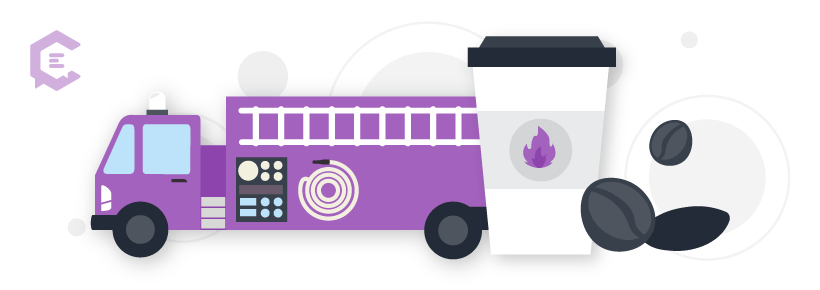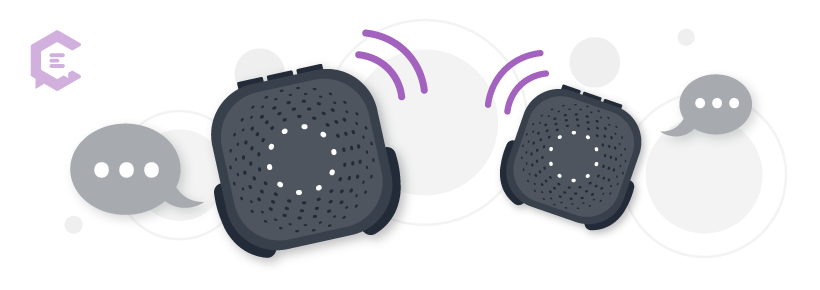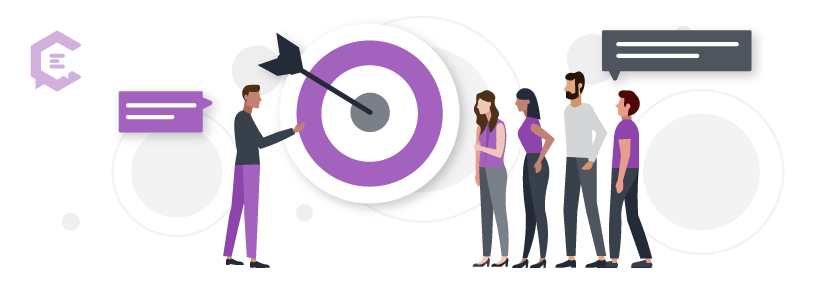In the content free-fall that is 2020, many of us have found our carefully crafted initial content strategies falling by the wayside in favor of something more immediate or appropriate. To take it a step further, in the earliest days of the pandemic, most brands went black putting a freeze on any new content or advertising.
As we slowly eased into the fact that coronavirus was here for a while (which is so much more comforting than saying for the foreseeable future), content creators and everyone from CPG manufacturers to healthcare providers created messaging that was sometimes heartwarming, but more often dire with a side-order of wholly depressing.
And then there was that pause in nearly everything. In late May, NPR reported that according to a World Federation of Advertisers, “89 percent of large advertisers delayed planned ad campaigns that would seem tone-deaf during the pandemic.”
4 brands’ content strategies for 2020
That said, some brands got it right even early on. Ad Age ran a story about a feel-good Sam’s Club spot that highlighted workers making sure we still all had access to crucial goods. And it worked. But six months into the pandemic, many brands have created an almost half-in, half-out approach; they touch on the subject of COVID-19 without committing to it. Other brands have completely revamped their own content and marketing strategies so that they meld their messaging with the fact that daily life as we once knew it has possibly changed forever.
For better or worse, some brands are keeping their changed content approach. Then there are brands that have been so on-point straight through that it would be counterproductive for them to shift their branding or content strategy — much less shift it back again.
1. Fire Department Coffee: of the moment and timeless branding and messaging
Fire Department Coffee is a veteran-owned business founded on the premise that coffee plays a vital part in helping firefighters stay alert through long shifts.
Founder and CEO Luke Schneider is a full-time firefighter/paramedic and a U.S. Navy veteran who partnered with firefighter/paramedic Jason Patton (who is also a full-time firefighter) and VP for Fire Department Coffee with a team composed of firefighters, first responders, and coffee aficionados. And they give back as well, with 10 percent of net proceeds donated to help provide essential resources and assistance to first responders who have been injured on the job or facing serious health challenges.
As for their content, it’s classic and to the point and highlights the brand and mission and the quiet power and integrity of the first responders behind the brand.
2. Tamron Hall: inching toward normalcy
One of the most successful content approaches has been a casual approach to whatever passes as normalcy for life during a pandemic. Not the new normal that everyone keeps talking about, but the fragility we sometimes unwittingly feel.
Woman’s Day magazine had a great feature on the ‘Tamron Hall’ show and why it works right here and now. In the article, Hall was quoted as saying that shows like hers allow “people to see you can move forward and inch forward in this.” She also said, “we hope we represent a part of what many people are going through every day, which is this desire to inch forward and move forward as best we can.”
3. Relay: pivot to reach new industries
At the dawn of internet 1.0, there were frequent conversations about staying true to the human side of things. Common wisdom said that, as we become more reliant on technology for our interactions, we should also remember to continue to highlight the parts of our business lives — and content should be focused on connection and interaction.
Relay is a brand that organically experienced some of those elements over the past few months.
“Relay is a powerful communication solution for active teams (think, smartphone meets walkie talkie) that was being rapidly adopted by hotels and large entertainment venues over the six months before COVID,” explained Barbara Sharnak, Senior Director, Marketing, Relay.
Understanding the impact that the pandemic had on those industries, Sharnak explains that the brand then “expanded our marketing to reach healthcare, transportation, food service and other industries centered on active work.” Industries reliant on staying continuously connected.
Relay experienced a change in users which inspired a change in content and outreach. Here’s a short explanation on how Relay’s brand and supporting content and even branding pivoted during the pandemic, and why it’s here to stay. As Sharnak explains it, “We found resonance in many new industries, particularly healthcare and food management.” Before the pandemic, “Our product had been primarily utilized to enhance and streamline guest service in hospitality, but those experiences were on hold due to COVID.”
But then Relay found a different end-user. “In healthcare and food management, Relay was adopted to circumvent new challenges brought on by the pandemic, like communication between hospitalized patients and their families who couldn’t visit and distanced coordination for contract food management.” Sharnak explained that Relay’s products combine the simplicity of PPE-operable hardware with the power of software “and have been able to help active and distanced teams stay connected in this challenging environment.”
And as Relay’s consumer base changed, their content followed. “As we saw the unique needs that Relay was solving during COVID, we shared these stories and use cases in the hopes of helping others,” Sharnak said. Besides that, Sharnak said, “Changes in work and socialization are likely to remain for the foreseeable future and we will absolutely continue to help businesses adapt and thrive in this changing environment.”
3 takeaways from Relay:
- Pay attention to who is using your products: In addition to your targeted demographic, is your secondary or a totally unexpected demographic creating new demand? If so…
- Talk to your new audience and create content for them: If your new demographic is just finding out about your product line, tailor your content and offerings to speak to them in a language they understand. If blog posts or video help create sales, create consistent usable content that delivers your messaging in the medium they prefer to consume.
- Keep at it: If your new demographic is a better fit, then keep creating the content that they trust. Just because your brand had content hallmarks in the before time, doesn’t mean they still best represent your brand, ideologies or intent. As you listen to your new audience, talk to them in the way they most prefer.
4. Truly Nolen: Surprise your target audience with timely content
One of the more interesting case studies on successful and unexpected content to come out of the pandemic is from a family-owned pest control business that’s been around for over 80 years. The folks at Truly Nolen informed me that, “From a social media standpoint, we quickly recognized when schools and business began to close in mid-March there would be a need for some educational videos for our fans and followers.”
To that end, they created a series of videos that were posted to the company’s Facebook page. In March, they posted a video called #TRULYTips with Thayer. About a month later, the company debuted #TRULYCrafts with Hannah, a video that had simple crafting tips for increasingly bored kids. A video that also garnered over 37,000 views. It’s a fascinating study in being savvy to social media and understanding both your clientele and the way they prefer to consume content. Shorter versions of the videos were shared to Instagram where the social media team created three educational playlists.
“We plan to keep the series going rather than switching back,” shared Toby Srebnick who manages communications for Truly Nolen. Their entire “social media content since mid-March has tried to focus on everything from interested job candidates to customers looking for a little escape with our very visual brand,” Srebnick added.
It’s a fascinating approach since, while pest control is essential to public health, it isn’t necessarily an industry one would imagine would produce shareable content. Truly Nolen also boosted their content by “donating the service to several police stations and fire departments across the country on April 15, and between that event and our satisfied customers posting their own items about the service (which we then share on our channels), our media coverage for several months has been focused on this service and what it can do for businesses.”
3 content marketing takeaways from Truly Nolen
- Create the kind of content your existing clientele enjoys.
- Go out of your comfort zone every now and again. While one might not automatically connect a pest control company with the idea of crafts for kids, this trusted brand made it work.
- If it works, keep doing it!
 Moving forward with the best possible content
Moving forward with the best possible content
“In normal times, I recommend 6 to 12 months of planning strategy in advance,” said Jennifer Goforth Gregory, B2B Technology Freelance Content Marketing Writer. But these are far from normal times. And yet some content creators are finding that the plan they created during crisis mode is actually the best possible approach. Go figure!
Goforth Gregory, one of the OG’s of content creation, shared some of the ways she’s seen content shift in the past few months.
“I’ve seen an increase in webinars and virtual events as people have become more comfortable and looking for interaction.” And turnaround time has changed as well. “I also have seen much shorter content calendars, Goforth Gregory said. “In the early days of the pandemic, calendars were only a few weeks out, but am now starting to see the length spread out.”
In addition to timing, the emotional aspects have changed as well. Goforth Gregory said, “I also have seen brands more willing to be more human and connect with people on a more personal level, even in the B2B space. I also saw brands really honing their branding and making sure that their content reflects their brand, especially in tone. I also have seen a greater focus on audience.”
5 notable content shifts
- An increase in webinars and virtual
- Shorter content calendars
- A more human connection between brands and consumers
- Sharpened branding
- Focus on audience
What about the long haul?
If you’re trying to decide what comes next, Goforth Gregory said, “I think that the focus on human element, audience and empathy should continue as a mainstay of content. Brands who overlook this often create content that feels flat and doesn’t truly connect.”
In other words, listen but also be authentic in your response and content.
Wondering if your strategy is effective? Goforth Gregory offers an easy way to check. “Metrics, metrics, metrics.” But don’t get bogged down on numbers alone. “The biggest thing to track is conversations, not just page views. You want to know what type of content is generating leads not just getting page views, they are often different.”
And if you’re not sure how to tell the difference between the two, make analyzing your leads and conversations a priority along with the page views.
Bottom line? Your connection with your customer base should always be the bottom line. “Our mission is to connect every worker to the people and information they need to succeed at their job,” Sharnak said. “With distanced work and coordination more of a priority than ever before, we see that need greater than ever before.”


 Moving forward with the best possible content
Moving forward with the best possible content



